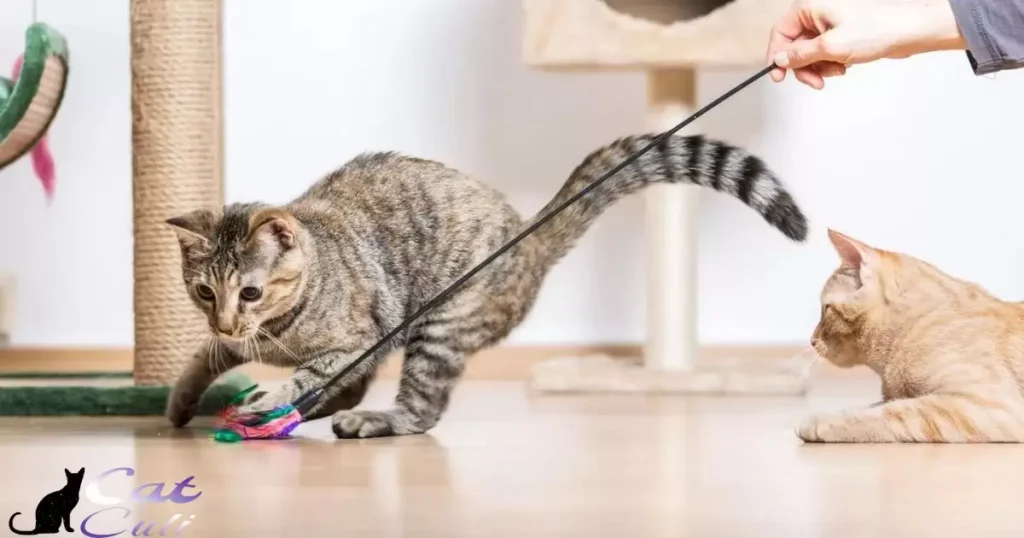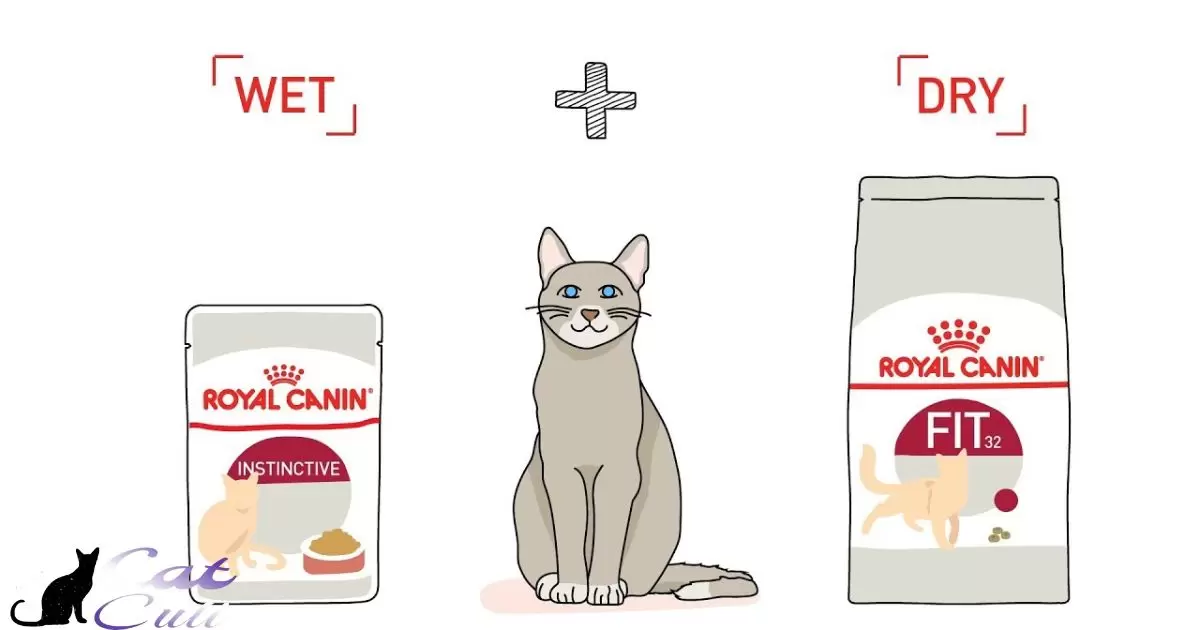A food to feed a cat calculator is a tool that helps determine the right amount of wet food to give a cat based on its age, size, activity level and other factors. It considers the cat’s daily nutritional needs and estimates how many ounces or grams of wet food is suitable.
“How Much Wet Food To Feed A Cat Calculator?” This is an important question for many cat owners. Figuring out the proper portion size for wet food helps keep a cat healthy and avoid over or underfeeding.
A wet food calculator takes into account that requirements vary between kittens, adult cats and senior cats. It also recognizes that heavier or more active cats typically need more wet food than smaller pets. With a calculator, pet parents can rest assured they are supplying their furry friend with the suitable daily amount of wet nutrition.
How Do Cat Food Calculators Work?
Cat food calculators work by asking the user to input some basic information about their cat. This includes the cat’s age, weight, activity level and whether it is neutered or spayed. Based on this data, the calculator uses formulas to estimate the recommended daily portion of wet food.
What Factors Do Cat Food Calculators Consider?
Calculators take into account a cat’s metabolism, which slows as they age. Larger and more active cats will need more calories. The cat’s life stage as a kitten or senior is also a factor. Most importantly, the calculator ensures the cat gets a balanced amount of nutrients in its wet food ration.
Which Brands Have Good Cat Food Calculators?
Many major cat food brands like Purina, Hill’s Science Diet and Royal Canin have wet food calculators on their websites. Users simply enter their cat’s details and the calculator provides a personalized feeding guide. IAMS and Blue Buffalo are two other brands with online calculator tools for wet versus dry food amounts.
Do All Cats Need The Same Amount Of Wet Food?
No, calorie and portion needs can differ significantly depending on the individual cat. Factors like breed, age, Wet Cat Food Sit Out activity level and metabolism mean one cat may do well on 3-4 ounces per day while another only requires 2 ounces. Paying attention to your cat’s body condition and energy is important for fine-tuning amounts.
Figuring Out Your Cat’s Calorie Needs

The first step in using a calculator is determining approximately how many calories your cat needs daily. Adult cats generally require 20-30 calories per pound of body weight. Kittens need more at 30-50 calories per pound.
What Types Of Cat Wet Food Have The Most Calories?
In general, pate or mushy-style canned foods tend to be higher in calories than flakes or shreds. This is because they contain more fat. Seafood and meat flavors also pack more of an energy punch than vegetarian varieties. Always check the label’s calorie information.
Do Calories In Cat Food Depend On Flavor?
Yes, the flavor can impact wet food’s calorie content. Most calculators take this into account. For example, salmon or tuna flavors commonly have 5-10 more calories per ounce than chicken. Knowing the calorie differences helps accurately estimate how many total ounces are needed.
How Many Calories Do Cats Need Daily?
On average, adult cats require around 250 calories per day for basic nutrition and health. However, this number varies depending on the cat’s metabolism and activity levels. Highly active cats may need 300 calories or more while some indoor pets do well with slightly fewer calories daily.
Can Too Many Calories From Wet Food Make Cats Overweight?
Consuming too many calories, whether from wet food or dry, is a leading cause of feline obesity. Extra weight puts stress on organs and joints. Most calculators are designed to provide only the amount of calories a cat needs without excess. Monitoring weight and adjusting amounts accordingly helps cats maintain a sleek figure.
Guidelines For Kitten And Senior Cat Wet Food
Kittens have very different dietary needs than adult cats. Calculators tailored for pets under 1 year factor rapid growth and higher calorie requirements. Seniors over 7 years also need adjustments for metabolism changes.
How Wet Food Do Kittens Need Compared To Adult Cats?
On average, kittens need twice as many calories per pound of body weight than adults. Most need 4-6 ounces total of wet food daily divided into 3-4 smaller meals. This supports healthy development until around 1 year of age.
Does The Amount Of Wet Food Change As Cats Age?
As cats enter their senior years at around 7-10 years, calorie needs slowly decrease. This is because metabolism slows down. Calculators for older pets provide lower overall estimates while still meeting nutritional needs.
When Should Senior Cats Switch To Wet Food?
Many veterinarians recommend supplementing dry food diets with wet food starting at age 10. Cats’ kidneys become less efficient with time, and wet foods are hydrating with higher water content. Switching fully at age 12-15 is common.
What Wet Foods Are Best For Aging Cats?
Look for senior wet foods that are easy for weaker teeth and jaws to chew. They have protein for muscle health with glucosamine/chondroitin to help joints. Canned foods also offer hydration and nutrients through natural juices.
Adjusting Cat Wet Food Amounts
It’s normal for cats’ appetites to fluctuate at times. Watch for changes in eating that may signal an adjustment is needed. Record how much is consumed to compare versus what calculators recommend.
Signs Show It’s Time To Increase Wet Food
5 easy tips for signs it’s time to increase wet food
- Weight loss – Your cat loses weight unexpectedly. This could mean they need more calories.
- Begging for food – They beg and plead for extra food between meals. Hunger may not be satisfied.
- Less energy – Your active cat seems lethargic or plays less. Extra calories could boost energy.
- Coat condition – Fur looks dull or skin loose when touched. Nutrition may be lacking.
- Eating slower – Meals take much longer to finish. Appetite isn’t big enough to meet needs.
When Is A Cat Eating Too Much Wet Food?
Portions above the calculator’s recommendation, weight gain over 2 pounds, vomiting after eating or refusing exercise can indicate a cat enjoys too many wet treats or leftovers in addition to scheduled meals.
How Do I Decrease My Cat’s Wet Food Portions?
Slowly reduce daily amounts by 1/8 to 1/4 ounce increments over several weeks. Monitor weight, behavior and stool to avoid issues from changes. Consult your vet if problems arise from portion adjustments.
How Often Should I Weigh My Cat For The Wet Food Calculator?
Experts suggest weighing cats monthly if they seem stable and every 2-3 months for those with fluctuating habits. Record any concerning trends over 5% of the cat’s body weight to recognize potential health problems.
Frequently Asked Question
How Do I Get The Most Accurate Results From A Wet Food Calculator?
Weigh your cat regularly and double check details like age and activity level match reality.
What If My Cat Begs For More Food After Scheduled Meals?
Monitor their weight and check for other issues. Extra hunger could mean stress or boredom rather than needing extra calories.
Should I Follow The Calculator’s Recommendations Exactly?
Use it as a guide but also observe your cat’s overall condition and energy levels. Make small adjustments as needed over several weeks with your vet’s input.
My Cat Has Special Needs. Will Calculators Account For That?
Calculators provide average estimates so talk to your vet about any underlying conditions or medications that could impact amounts. Personalized guidance may be needed.
When To Stop Using A Calculator Once My Cat Is Fully Grown?
Continue recording their weight regularly. Recheck recommendations every few months or with life stage changes like potential weight gain years later. Cats stay active at various levels.
Conclusion
Using a How Much Wet Food To Feed A Cat Calculator? is a useful tool for pet owners. It provides a starting point to determine appropriate portions for cats based on their individual characteristics. While calculators aim to estimate nutritional needs, monitoring your cat’s overall condition, energy levels, weight and appetite is also important for fine-tuning amounts over time.
The goal in using the calculator is feeding a cat the proper balance to support health and wellness without over or underfeeding. Maintaining open communication with your vet allows adjusting the recommendations as your feline companion’s needs change throughout their life. With guidance from a calculator and your vet, pet parents can feel confident they are meeting their cat’s dietary requirements.








